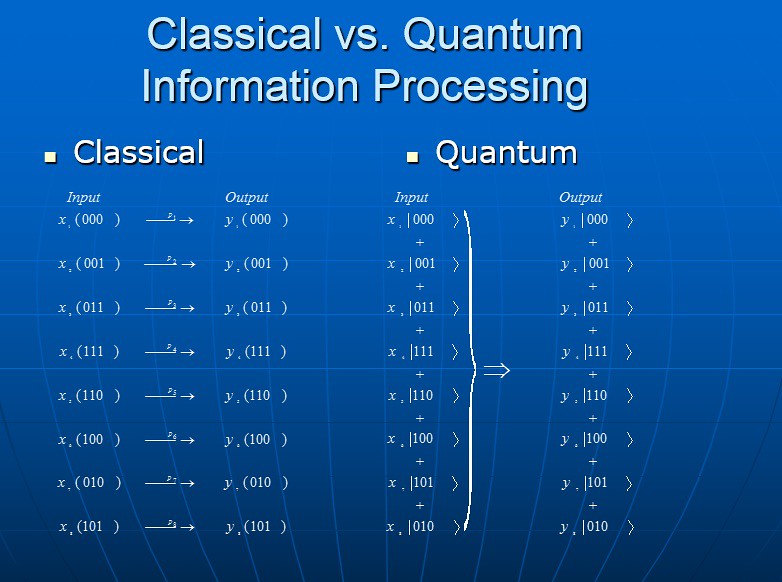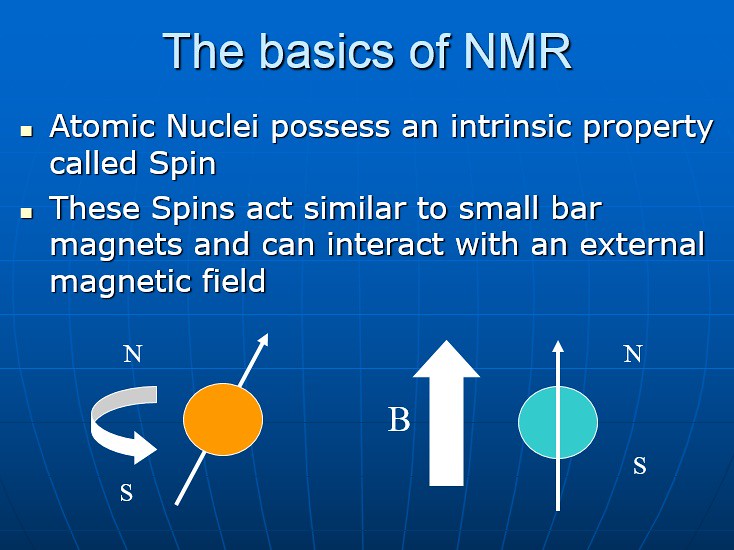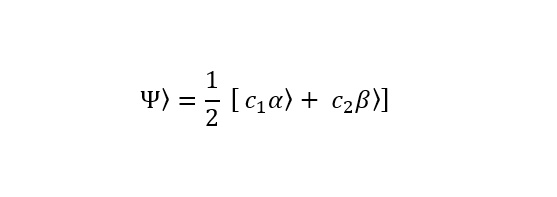The question of whether a computer can 'think' came to mind the other day while reading a 'research brief' from the website 'Scientific Computing' titled "Quantum Algorithm Could Help AI Think Faster" with an introduction stated below:
One of the ways that computers 'think' is by analysing relationships within large sets of data. An international team has shown that quantum computers can do one such analysis faster than classical computers, for a wider array of data types than was previously expected.
You may be wondering at this moment what 'relationships' is the computer looking for. The author gives a good example of using the fluctuation of stocks over a given period of time. Of course, the description is using a 'linear quantum algorithm' rather than a classical one:
A linear system algorithm works on a large matrix of data. For example, a trader might be trying to predict the future price of goods. The matrix may capture historical data about price movements over time and data about features that could be influencing these prices, such as currency exchange rates. The algorithm calculates how strongly each feature is correlated with another by 'inverting' the matrix. This information can then be used to extrapolate into the future.
Finding relationships within data sets (or 'correlations') takes time - a large amount of time if the computation is carried out on a 'classical computer' in a normal fashion. The slide below shows how computations are carried out with 'classical computers' -- parallel processing:
In the picture above, the left hand column is made up of 8 parallel processors analogous to 8 different computers. On the right hand side, the same 8 parallel processes are represented by 3 qubit processors (hang on I will explain what a qubit is shortly). The message that the reader should take from the picture above is that with quantum computation, the same computational process which would require 8 parallel processes (with classical computation) would only require 3 qubit's with a quantum computer.
What is a quantum computer?
Atomic nuclei make up "Qubit's". Whereas in the picture at the beginning of the blog post, a typical transistor 'bit' with two states ("0" or "1") is now transformed into a 'quantum bit' or 'qubit' with the strange properties of existing with parts (percentages) of both states "0" and "1". Your mind may well be spinning at this moment. Do not worry, the world of quantum computation takes some time toward getting used to. Here is a comparison below which describes states described in the picture in the beginning of the blog post:
The transistor used in computers today has two different states ("0" and "1"), whereas a nuclear spin (atomic nuclei) has a combination of spin states ("0" and "1") or energy levels as shown below:
The above diagram is an energy level diagram for an atomic nuclei in the presence of a strong magnetic field. Such fields exist in both Nuclear Magnetic Resonance Spectroscopy (NMR) and Magnetic Resonance Imaging (MRI). The second type of magnet is the same as that used in the hospitals to scan patients for health reviews after an injury. Below are the basics of NMR and MRI:
Basically, molecules are made up of atoms and these atoms acts as magnets which can be excited in the presence of a magnetic field. As the operator excites the molecules in a magnetic field, the result is a 'read out' or energy spectrum which can then be interpreted to give certain data to scientists. Researchers have taken the measurement technique and have explored using this as a way to test the viability of creating a quantum computer -- using molecules. Specifically by using atoms within molecules as a 'qubit' as shown below:
With a quantum mechanical description of 'spin states' as follows:
Where c1 and c2 can very as percentages of each spin state or binary state ("0" and "1"). When molecules are excited in the presence of a magnetic field, the atoms which make up each molecule can "exchange energy" while the energy is diffusing through the sample. The exchange of energy (magnetization or information) is where the concept of "entanglement" exists.
The existence of binary states correlating with one another is referred to as "entanglement" in quantum mechanics. Just yesterday, an article appeared on "Aeon" on 'entanglement' - which is worth reading. The difficult aspect of using quantum mechanics to carry out computations is to 'read out' the computation which is 'entangled' in an efficient manner. For now, the major goal toward using quantum mechanics is harnessed in a quantum computer by using the property of 'entanglement' rather than 'parallel processing' as introduced above.
The point is that a computational process which takes 8 parallel processors (as shown above) one single step can be accomplished with 3 qubits (scales 2 raised to the power of 'n' - processors). That has the potential of speeding up the computational searching speed dramatically. Which opens the doors to greater encryption, searching algorithms, and computational power which has not be realized up to this point.
Conclusion...
Of course, any new technology has new challenges. Quantum computation is not without challenges. There are many which have been discovered which remain to be overcome and there are many which remain to be known. One obvious problem is with the idea of 'decoherence' of quantum states over time. The ability to keep quantum states "aligned" or 'in sync' with one another over time and not lose information in the process is extremely challenging. Although much progress has been made and can be found by entering "quantum computing" into an academic search engine.
The take home message is that in the future, computing will take on a new form and open doors to new information. Even if the idea of a quantum computer is never fully realized, the search in the laboratory for a working system will inevitably solve other issues is a wide range of fields. As I showed (briefly and not with justice), scientists can use nuclear magnetic resonance spectroscopy to interrogate (excite) atoms within molecules and perform quantum computations. While exploring the use of molecules to perform quantum computations, researchers find new ways to improve NMR spectroscopy and in turn, MRI spectroscopy. Therefore, the patient who seeks treatment and finds herself/himself inside the magnet in a hospital now could benefit more from such advances. Until next time, have a great day.
More blog posts:
Thoughts: Senator Bernie Sanders Asks Public To Get Involved In The Public Process At Any Level
Thoughts: Arnold Schwarzenegger Gets A Fly (Insect) Named After Him
Thoughts: Trump Administration Realizes Renewable Energy Is Here To Stay?
Thoughts: How Does A Government Shutdown Indirectly Affect The American People? Two Examples
Parameters: Obesity Short Circuit Discovered Leads To Overeating
Thoughts: Florida Gets Offshore Oil Drilling Ban - Why Not Pacific Coast Too?







No comments:
Post a Comment